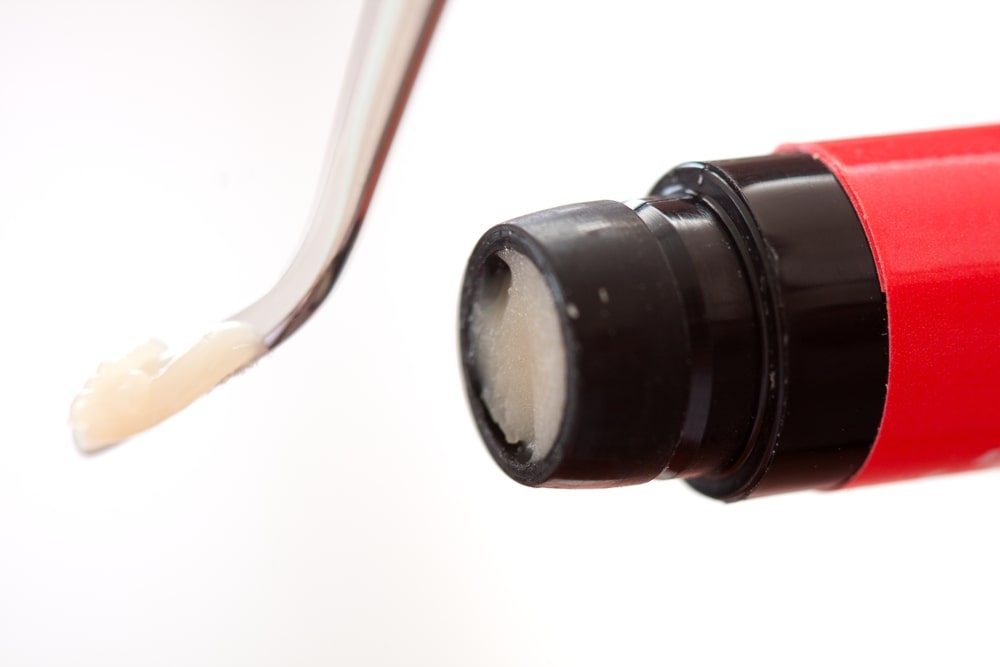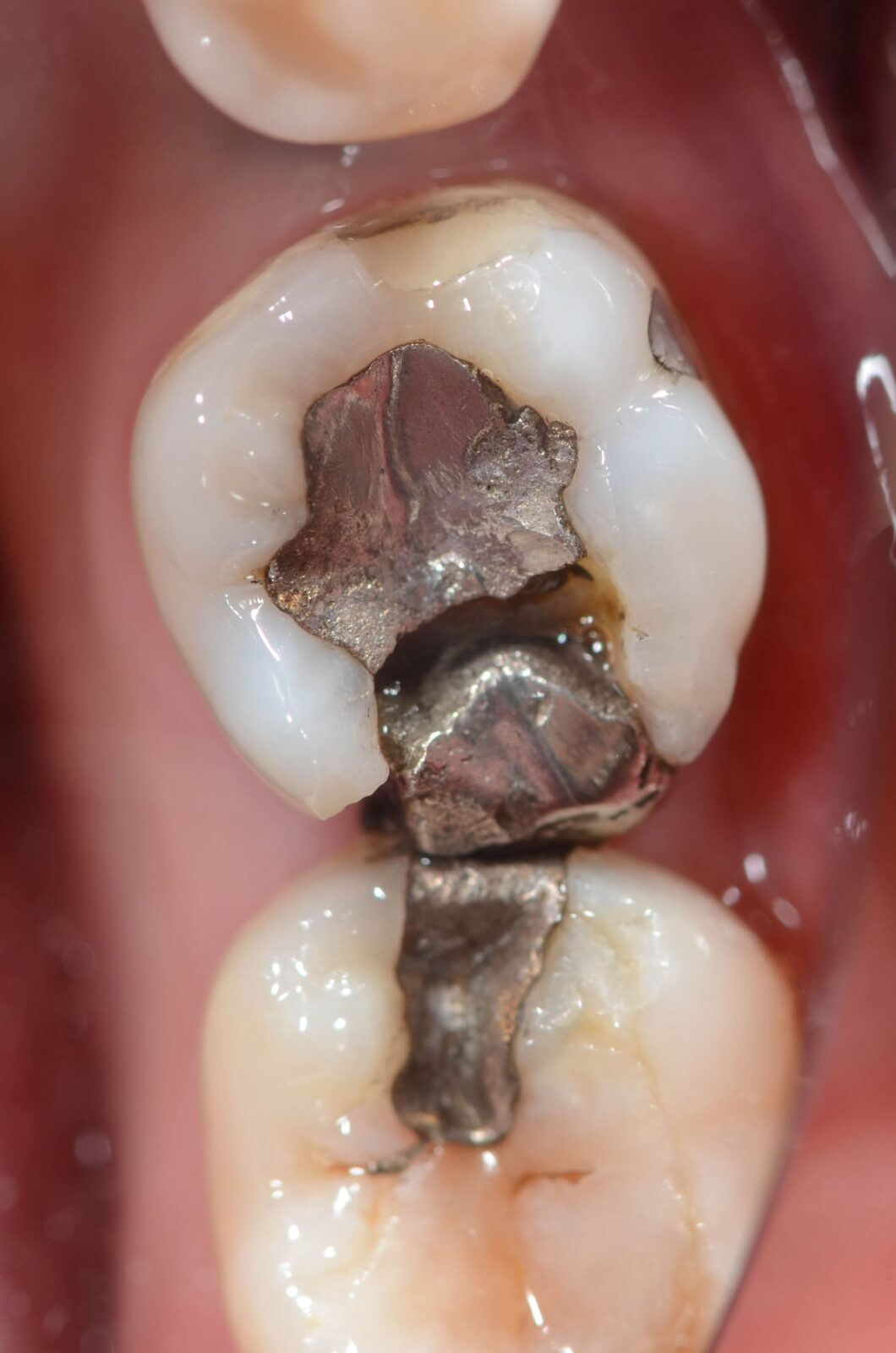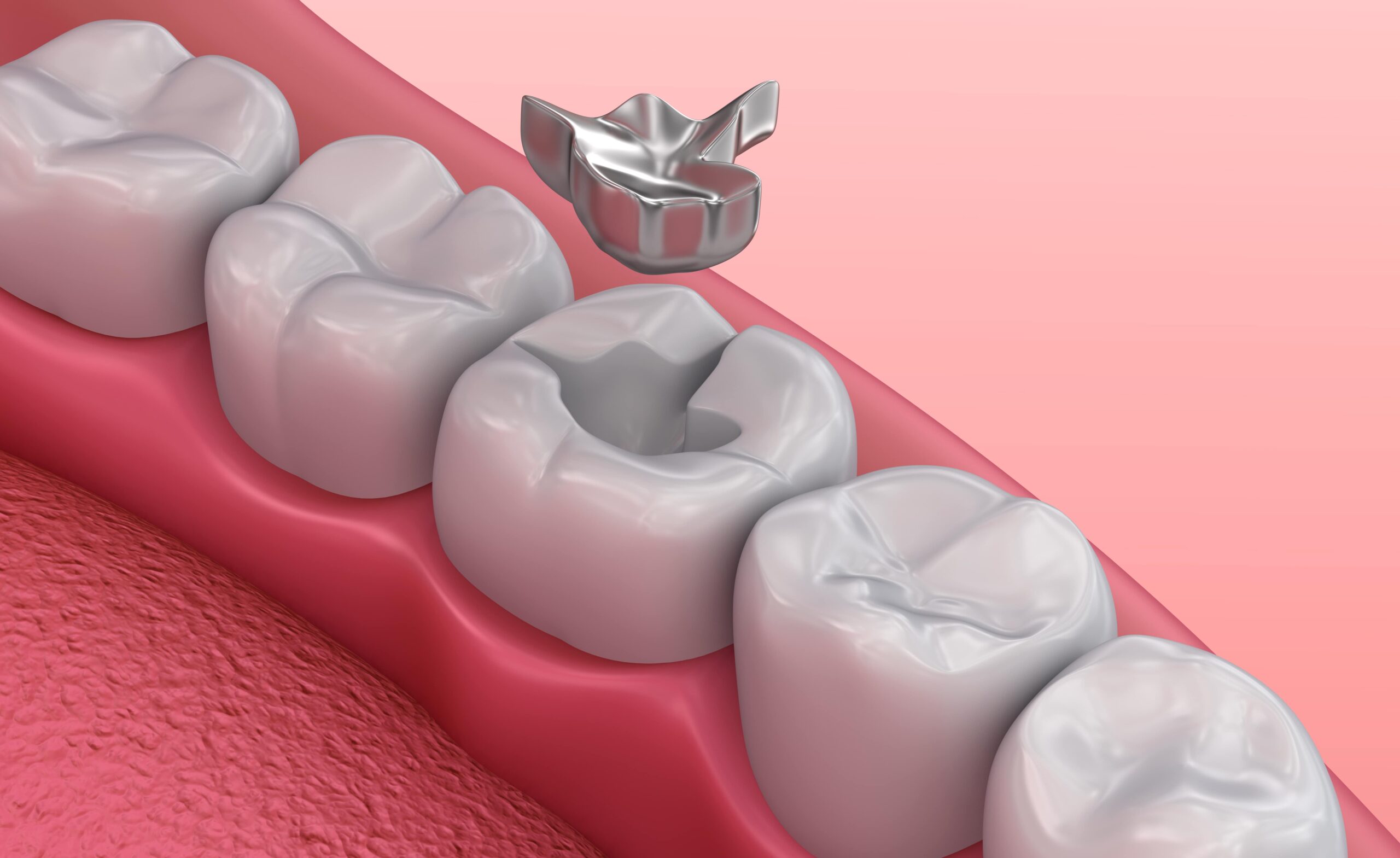For many years, metal fillings have been the standard in dental restorative materials. Composed of a mixture that includes metals like silver and mercury, these fillings have been the stalwarts against tooth decay, restoring countless smiles to their functional best. Known for their strength and longevity, metal fillings have certainly earned their place in dental history. But as with all things, progress in dental materials and techniques beckons a second look at traditional practices. Today, concerns about health, aesthetics, and structure integrity are leading many to reevaluate the role of metal fillings in modern dentistry. In this blog, we’ll define what metal fillings are and delve into five reasons why it might be time to consider replacing them with newer, more advanced options.
What are Metal Fillings?
Metal fillings, also known as dental amalgams, have been used for over 150 years to restore the structure and function of teeth damaged by decay. They are a mixture of metals including silver, mercury, tin, and copper. Amalgam has been favored in the past for its durability, ease of application, and relatively low cost. However, despite their efficacy, concerns have been raised about their safety and aesthetics.
What Other Filling Materials are Available?
Dental filling materials have expanded significantly to provide more options that cater to various needs, including aesthetic preferences, the strength required for back teeth, and considerations for patients with allergies to certain metals. Here are the most commonly used dental filling materials available today:
Composite Resins
Composite fillings are a popular choice for many patients because they can be closely matched to the color of the teeth, making them less noticeable than metal fillings. They bond directly to the tooth structure, providing support, and are ideal for small-to-midsize restorations in areas of moderate chewing pressure.
Porcelain (Ceramic) Fillings
Porcelain fillings, also known as inlays or onlays, are durable and offer an aesthetic solution that is resistant to staining. They are typically more expensive than other filling options but can be matched perfectly to the natural color of your teeth and can last for a very long time.
Glass Ionomer
This type of filling is made from acrylic and a specific type of glass material. Glass ionomer fillings are less durable than composite resin but release fluoride, which can help protect the tooth from further decay. They are generally used for fillings below the gum line or for young children.

Dental Composite (Flowable Resins)
Similar to composite resins but with a different consistency, flowable resins are used in very small cavities and areas that are not subject to high biting pressure. They can be used as a “liner” under another filling material.
Resin-Ionomer Fillings
Resin-ionomers are similar to glass ionomers but are enhanced with added resins. They are used for non-load-bearing fillings (such as those between the teeth) and for fillings in primary (baby) teeth.
Temporary Fillings
Materials like zinc oxide eugenol are used for temporary fillings. These aren’t meant to last long term but serve an important purpose in emergency dental treatments or as interim restorations until permanent fillings are placed.
When choosing a filling material, several factors are considered, including the location and extent of the decay, patient history, aesthetic needs, and economic considerations. Your dentist will recommend the best material based on these factors, ensuring that your filling restores both function and appearance to your affected tooth.
Five Reasons to Replace Metal Fillings
With the evolution of dental technology, many people are choosing to replace their metal fillings with more modern materials. Here are five compelling reasons to consider this change:
Aesthetic Improvements
Metal fillings are quite conspicuous and can detract from a white, bright smile. They can make the filled teeth look dark and cause a grayish tint to permeate the entire tooth structure. Composite fillings, on the other hand, are made to match the color of your teeth, providing a much more natural appearance. Opting for such tooth-colored fillings can improve your smile and boost your confidence.
Mercury Concerns

One of the most debated aspects of amalgam fillings is their mercury content. Although the American Dental Association states that the level of mercury in fillings is safe, some patients and health practitioners express concern about potential mercury exposure, which can be harmful at high levels. As mercury is a known toxin that can have harmful effects on the nervous system, kidneys, and immune system, some people opt to replace their fillings as a precaution.
Tooth Structure Preservation
When a tooth is prepared for a metal filling, more of the tooth structure may need to be removed to keep the filling in place. Composite fillings, in contrast, require less removal of tooth material, which means more of your natural tooth is preserved. This is a critical consideration for maintaining long-term dental health.
Long-Term Durability
While metal fillings are durable, they aren’t a permanent solution. They can weaken teeth over time because metal can expand and contract with temperature changes, causing a tooth to crack or break. Replacing old metal fillings with newer materials like composite or porcelain can reduce the risk of damage and often extends the life of the filled tooth.
Better Support for the Tooth
Composites bond directly to the tooth, providing additional support to the tooth structure. This bonding helps to insulate the tooth from extreme temperatures and reinforces the remaining tooth to prevent breakage and damage. By contrast, metal fillings do not bond to the teeth; they simply rest in the cavity and can eventually lead to the tooth becoming more vulnerable to fracture.
The Process of Replacing Metal Fillings
Replacing metal fillings is a straightforward procedure that your dentist can often complete in one visit. The old filling is removed, any decay is cleaned out, and the tooth is prepared for the new filling. An impression is made if an inlay or onlay is required, and a temporary filling may be placed until the permanent one is ready. If a direct composite resin is used, the procedure will be completed in one sitting.
Conclusion
While metal fillings have served many patients well for decades, the push towards more biocompatible, durable, and aesthetically pleasing materials is strong. It’s important to discuss with your dentist whether your metal fillings are still the best option for you or if it’s time to turn the page and opt for a material that’s in harmony with both the health and appearance of your smile.
If you’re considering replacing your metal fillings or simply want more information on the subject, schedule a consultation with your dentist. They will be able to provide personalized advice based on your dental history and current health. After all, your smile deserves to shine without the shadow of metal dimming its brilliance.



